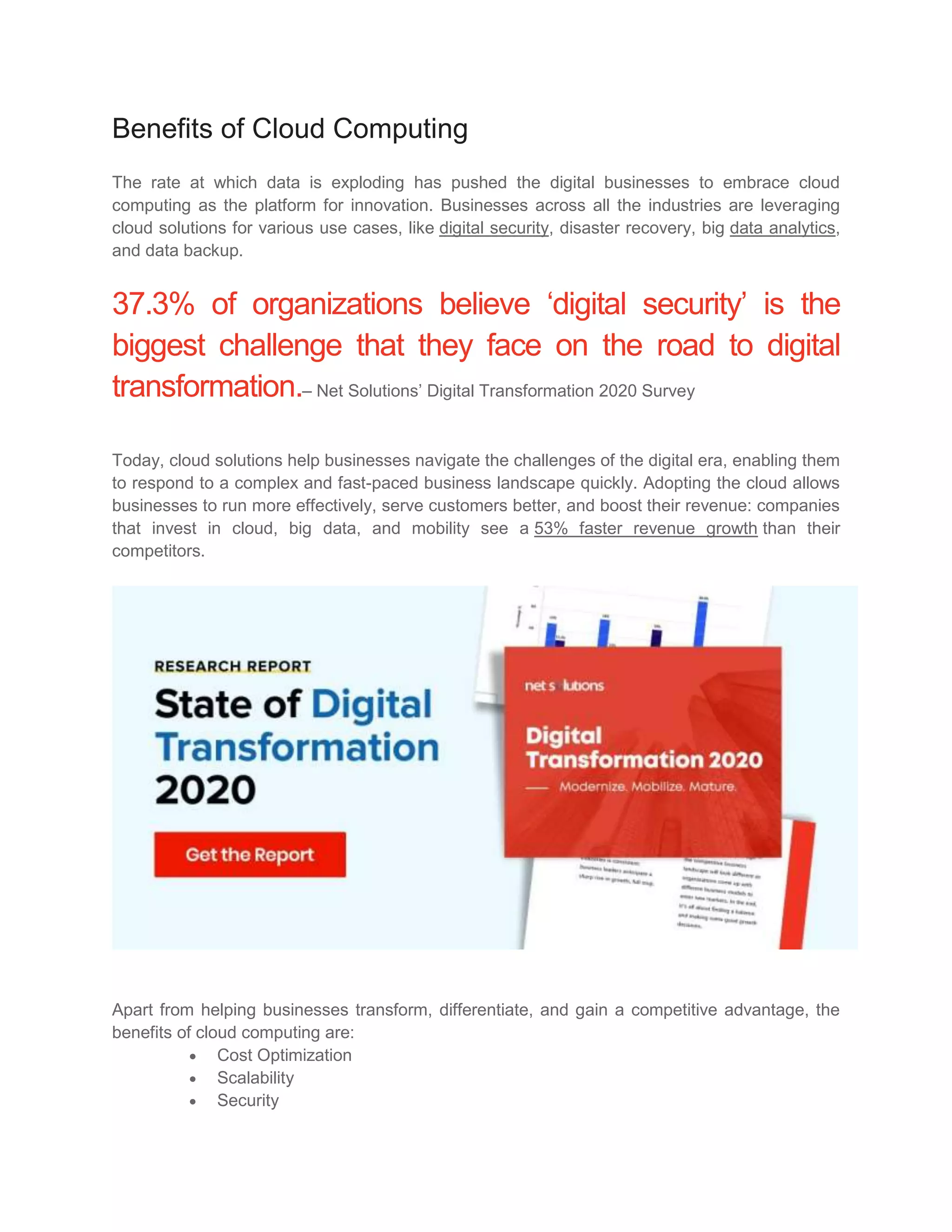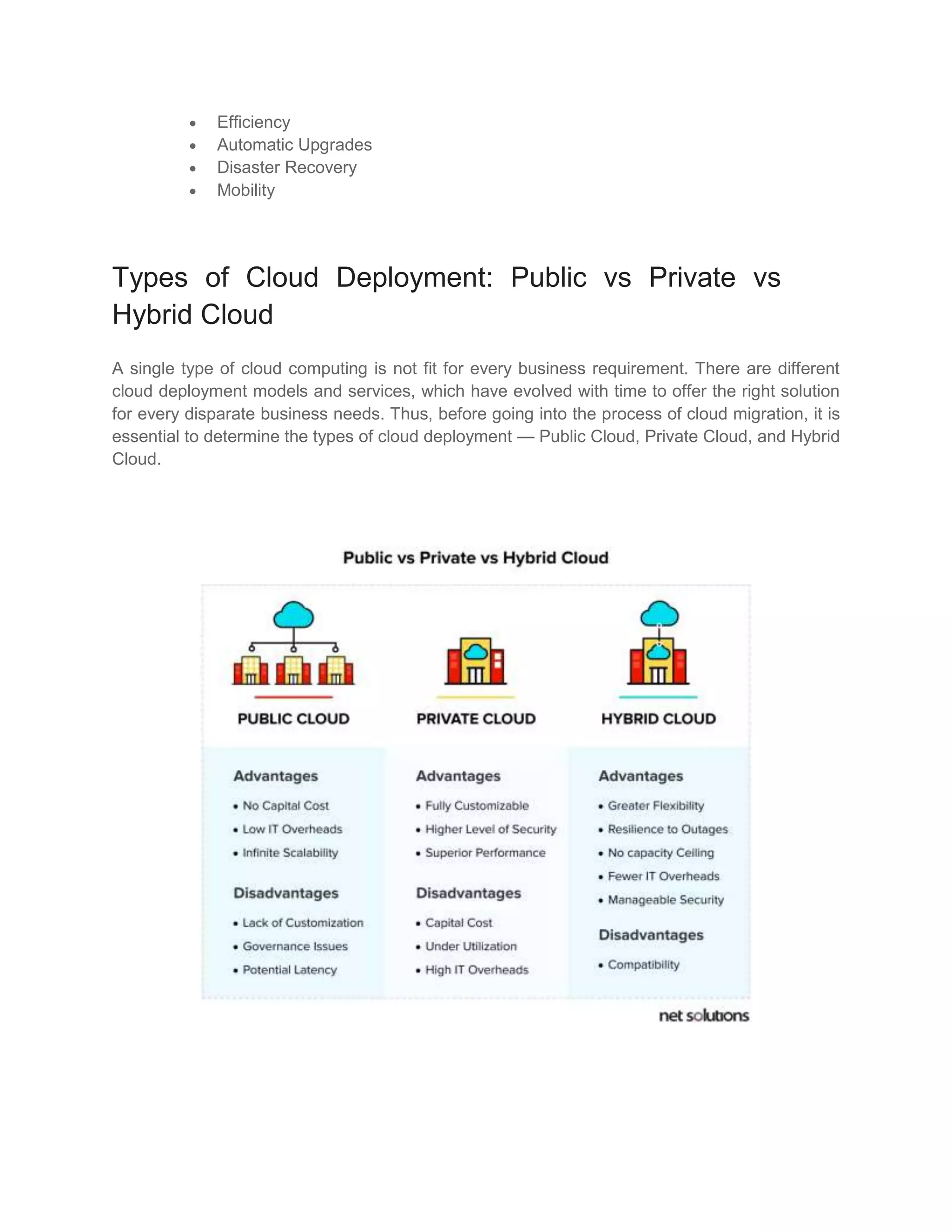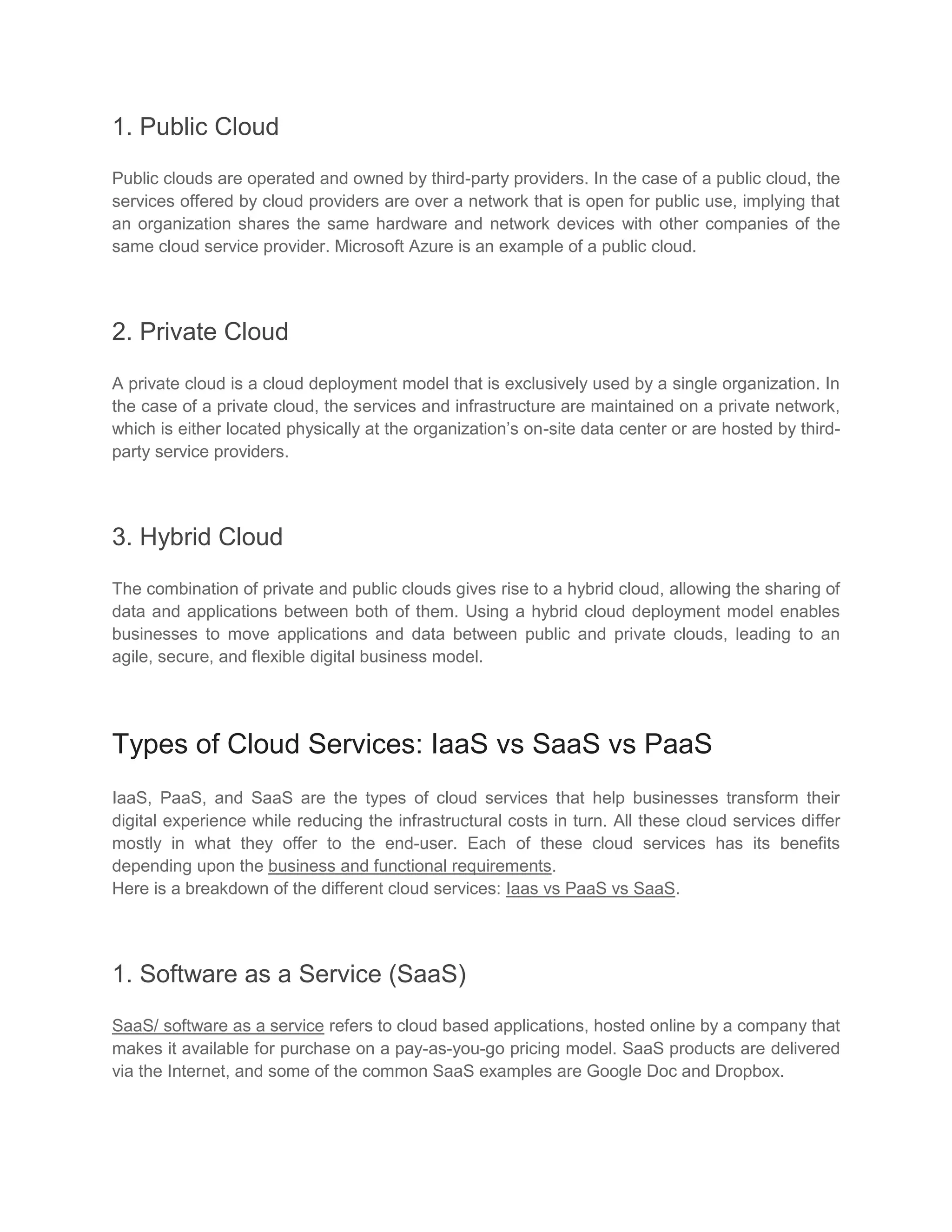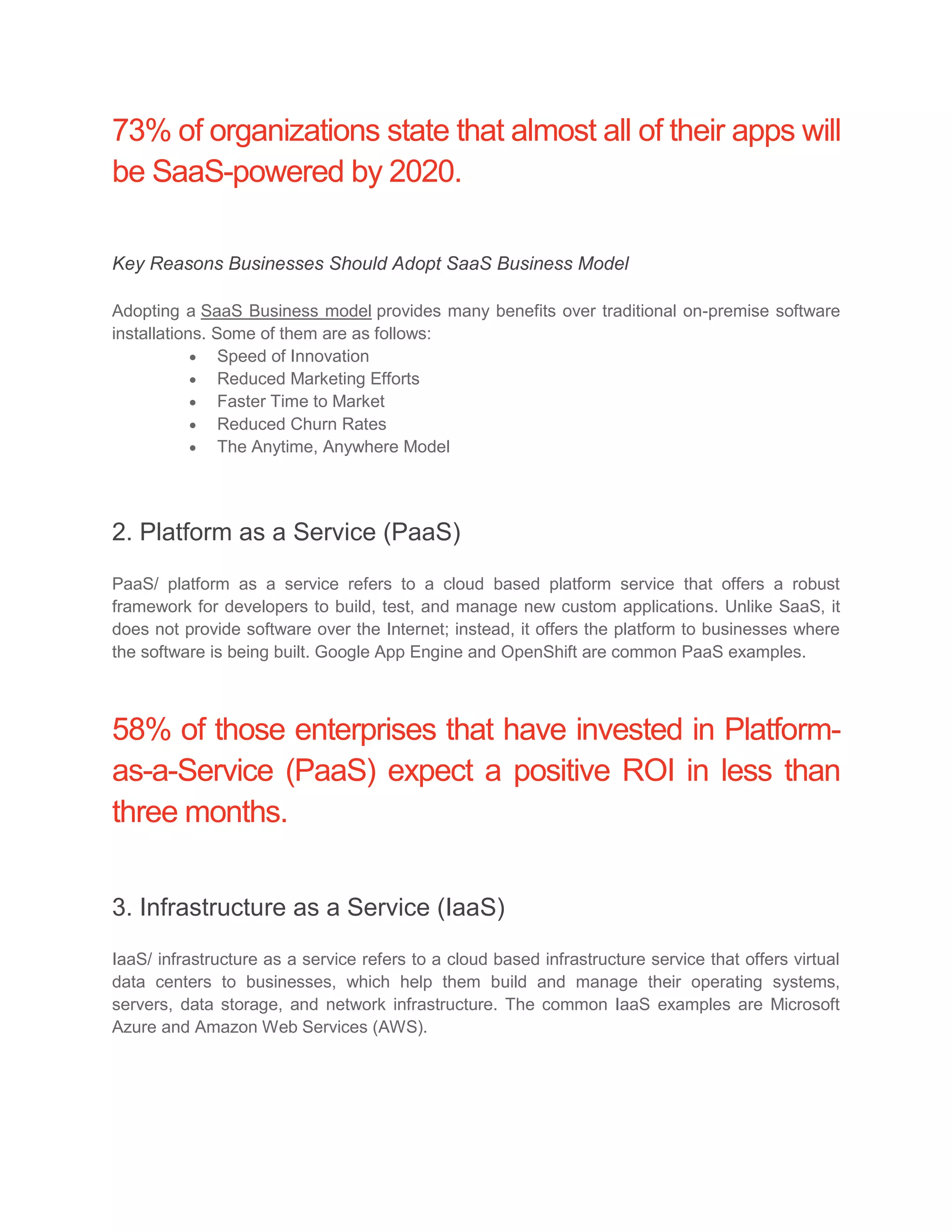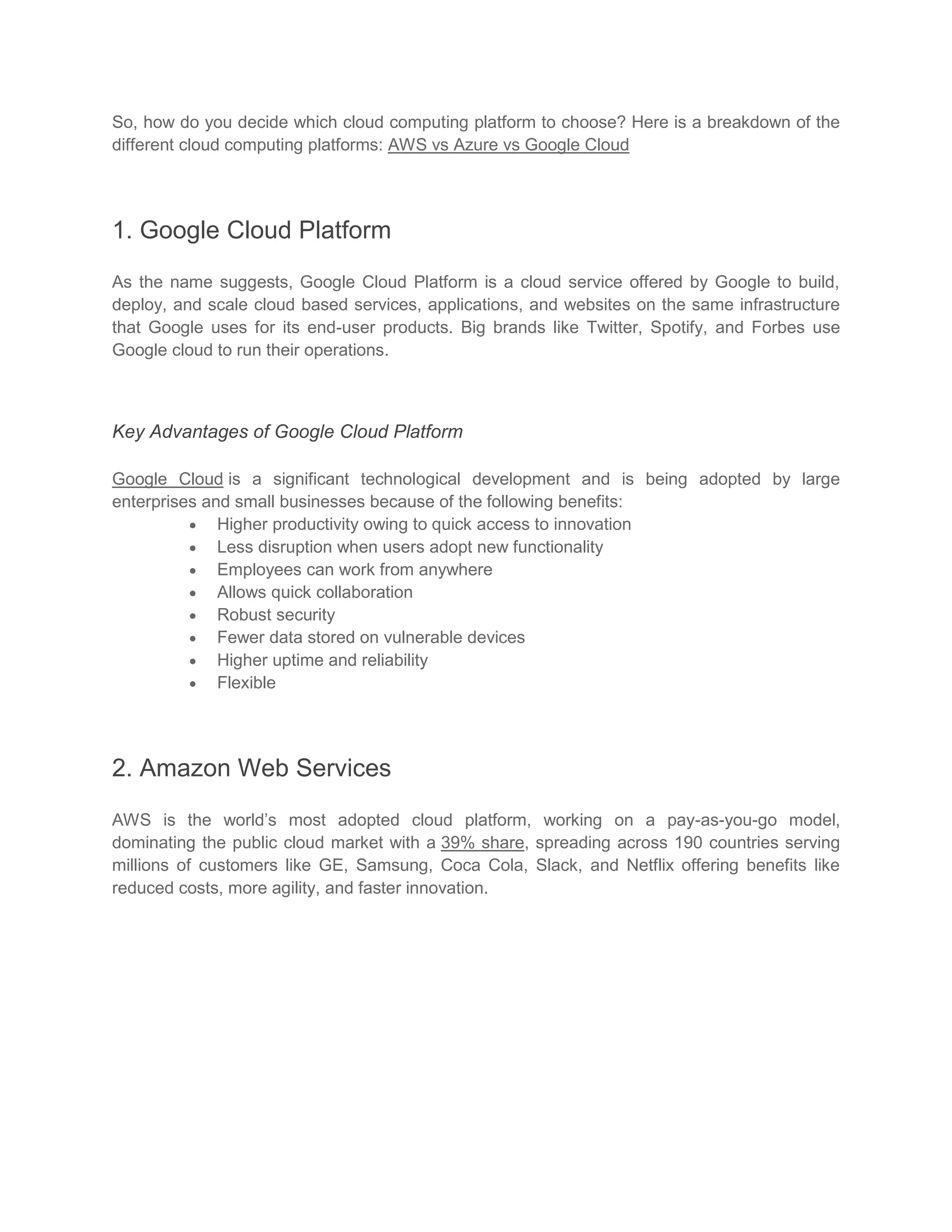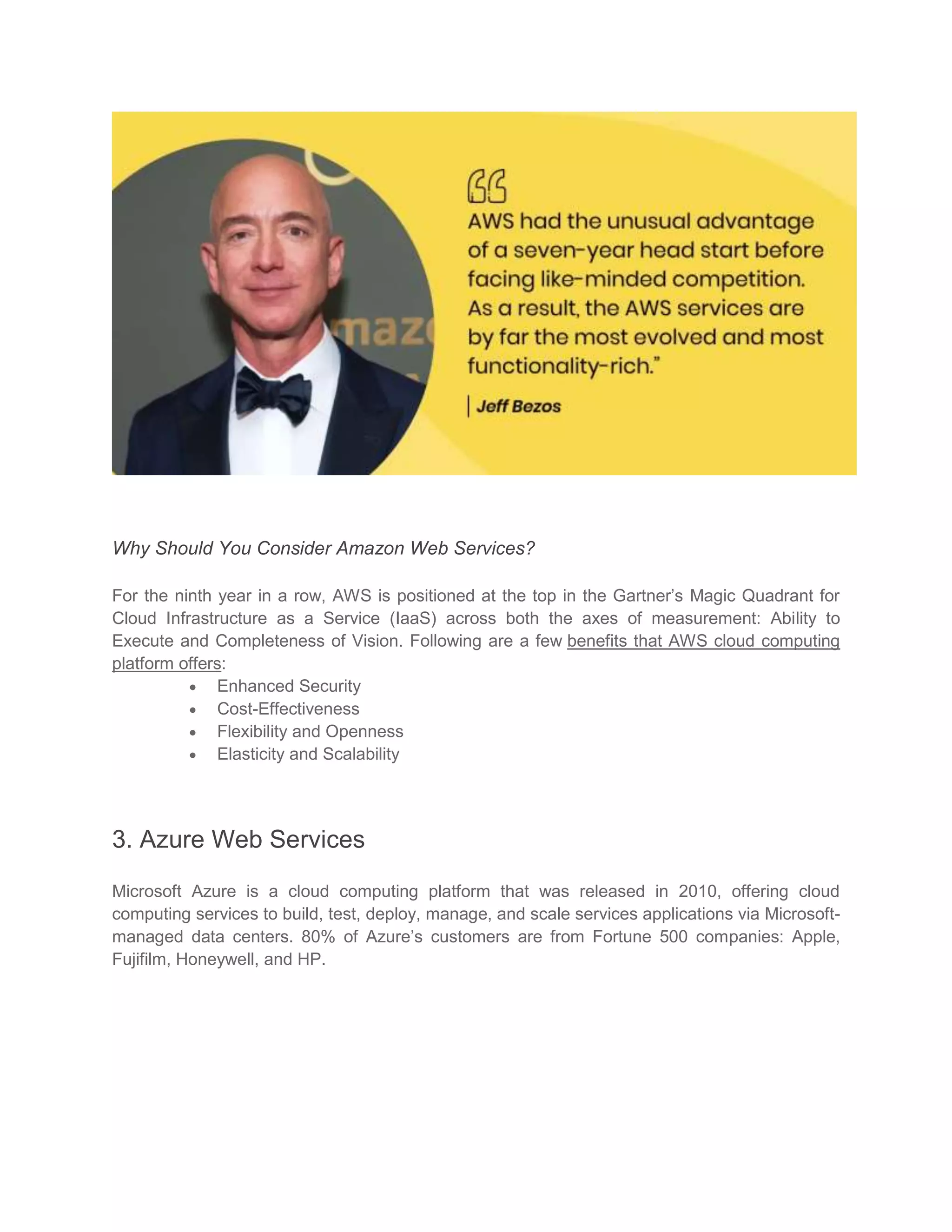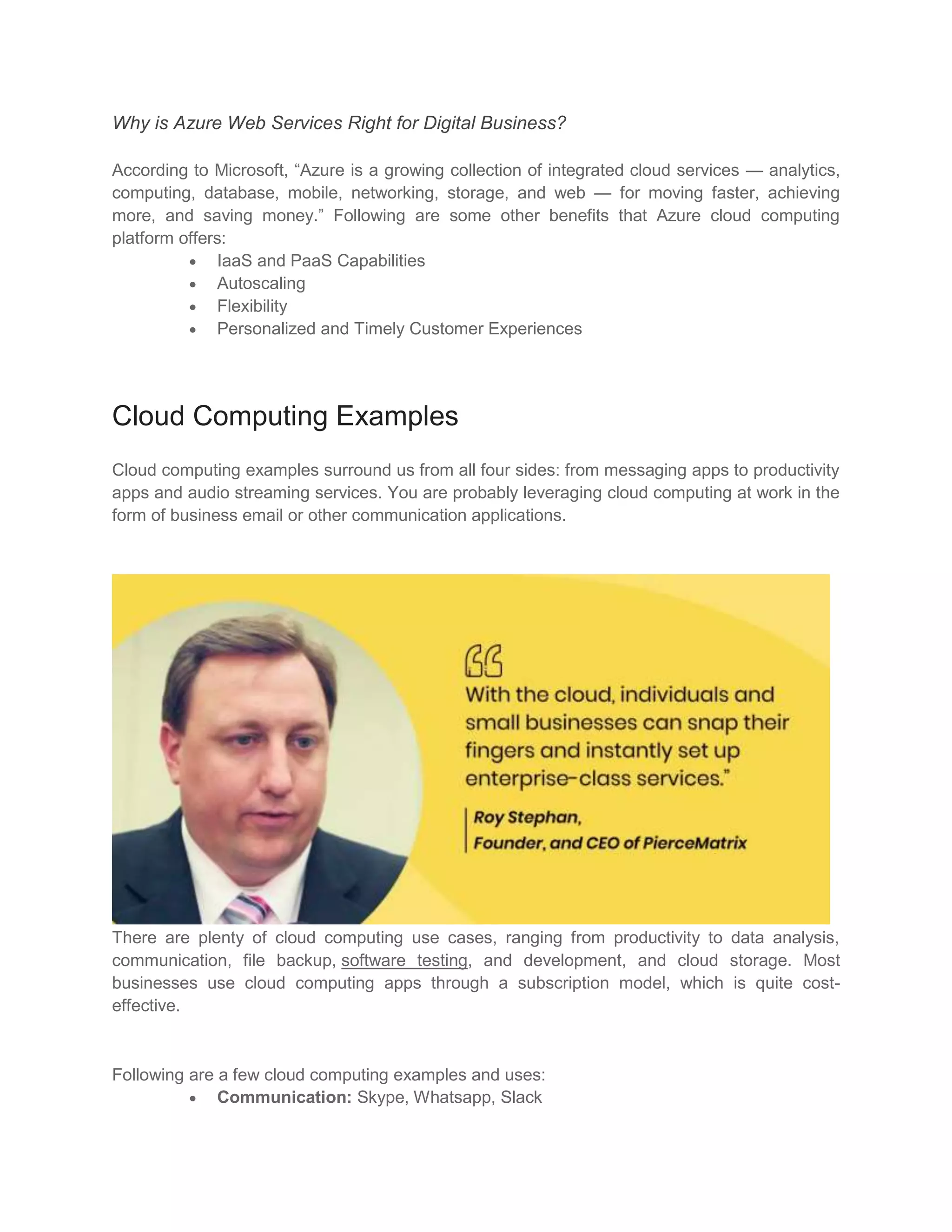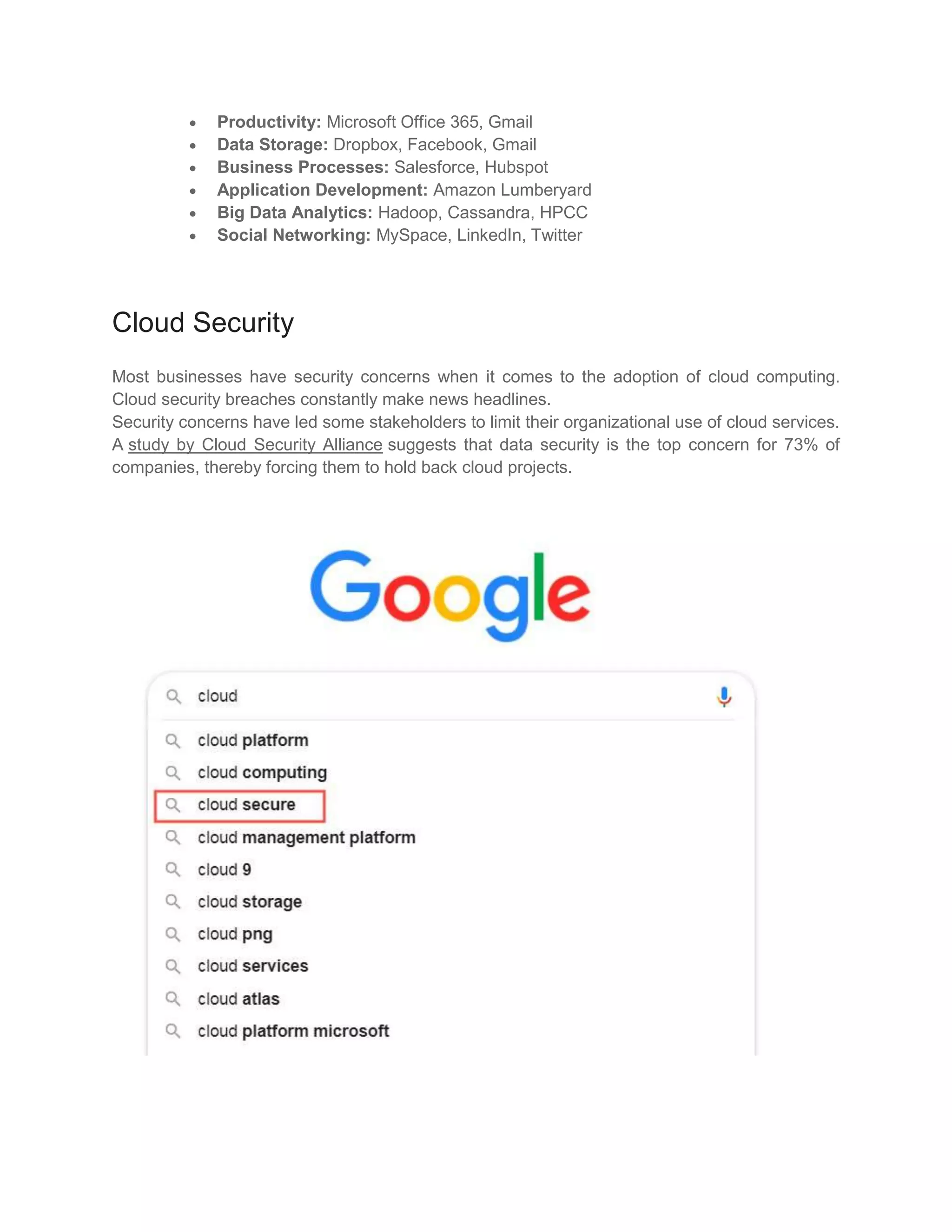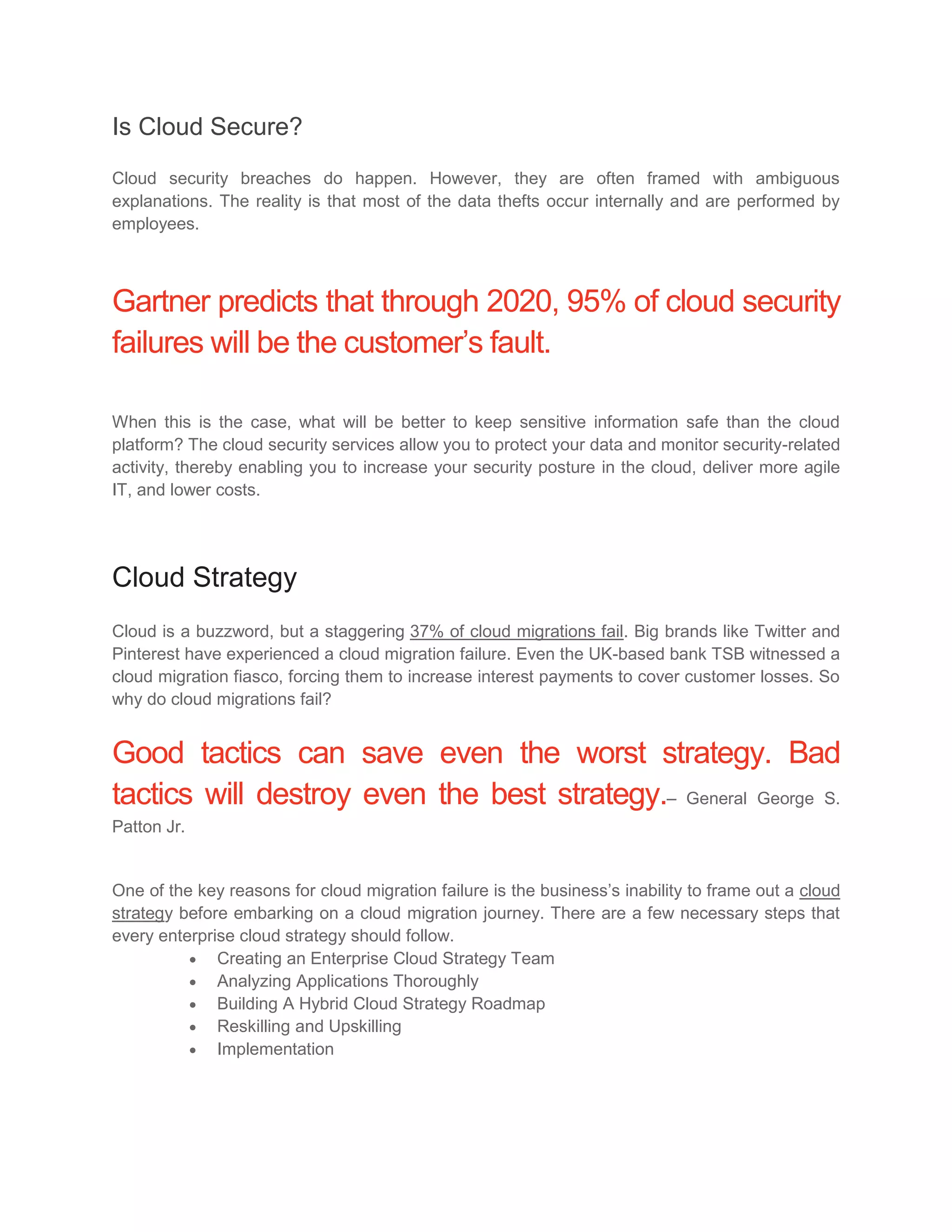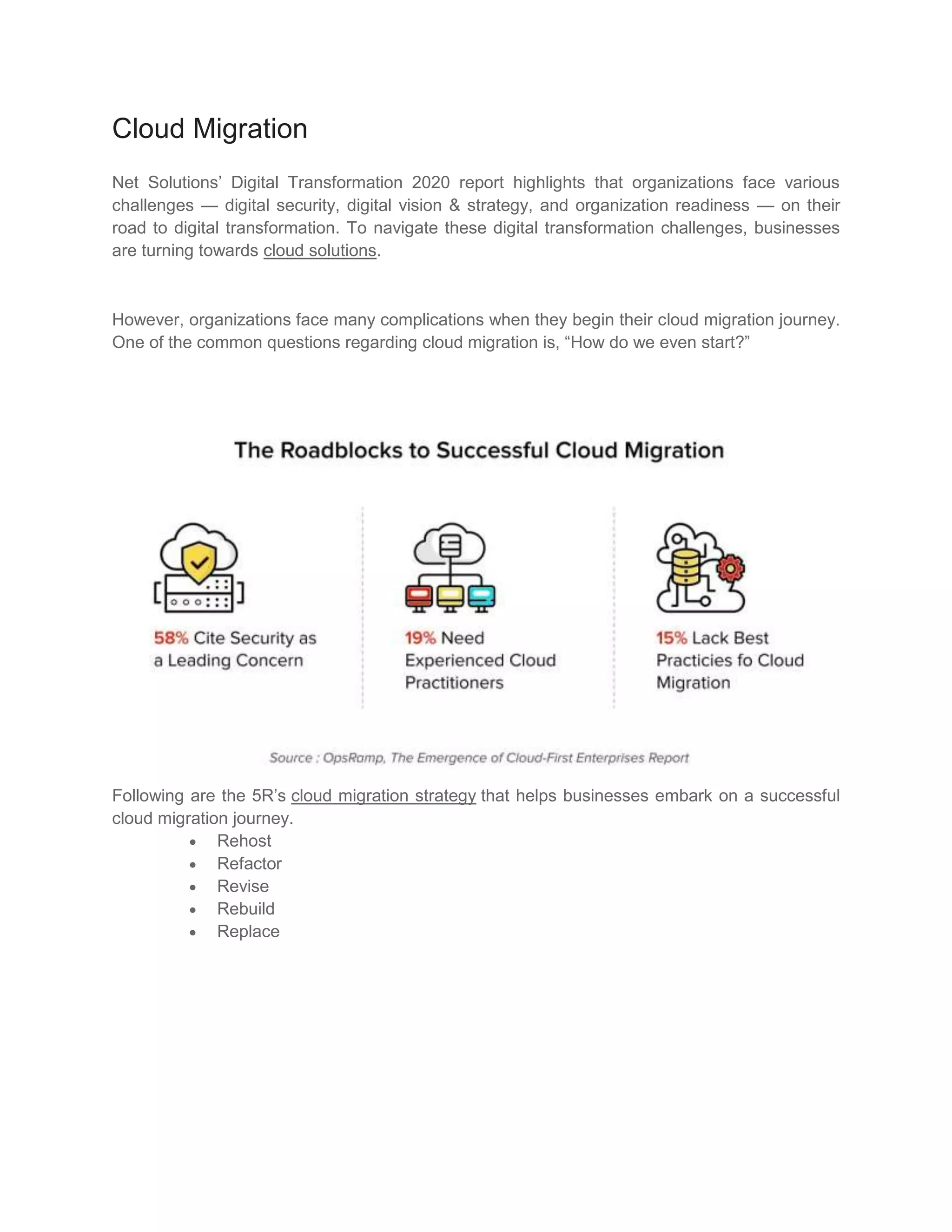Cloud computing has become essential for digital transformation, aiding businesses in achieving agility and innovation through on-demand IT capabilities. Various deployment models (public, private, hybrid) and service types (IaaS, PaaS, SaaS) cater to diverse organizational needs, yet many businesses lack a documented cloud strategy. While cloud adoption offers significant benefits, including cost optimization and increased revenue growth, security concerns remain a major barrier, leading to frequent migration failures.




